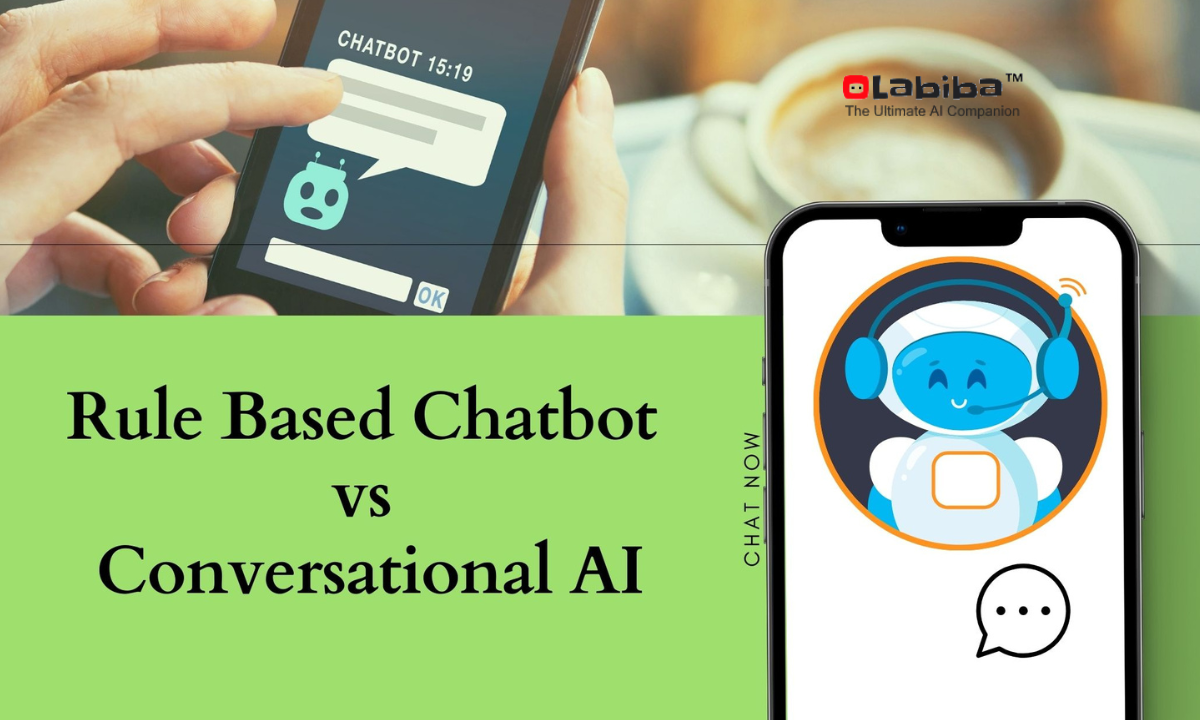Introduction
In today’s fast-paced e-commerce landscape, excellent customer service can be the difference between a sale and a missed opportunity. As more shoppers turn to online platforms, businesses are exploring new ways to handle customer queries effectively. Two popular options are rule-based chatbots and conversational AI. But which one is right for e-commerce? In this guide, we’ll break down the key differences between these two technologies, their strengths and weaknesses, and how each can impact the customer experience.
Understanding Rule-Based Chatbots
What Are Rule-Based Chatbots?
Rule-based chatbots, also known as scripted or pre-programmed bots, are the simpler form of automated customer support. These bots operate based on a set of predefined rules and can only respond within those guidelines. When a user interacts with a rule-based chatbot, the bot matches the query to a pre-set response, delivering answers based on keywords or specific phrases.
Key Characteristics of Rule-Based Chatbots
Limited Flexibility
Rule-based bots can answer common questions like “What are your store hours?” or “How do I return an item?” But they struggle with complex queries that don’t match the exact wording in their scripts.
Quick Setup and Low Cost
Setting up a rule-based chatbot is relatively fast and affordable. Since these bots use basic coding, they are less expensive to develop and maintain than more advanced AI-driven solutions.
Best for Simple Tasks
Ideal for FAQs and simple queries, rule-based chatbots can improve response times for routine questions without involving human support.
Understanding Conversational AI
What Is Conversational AI?
Conversational AI refers to technology that can understand and respond in a more human-like manner, handling complex queries and even learning from past interactions. It leverages machine learning and natural language processing (NLP) to engage customers in conversations, adapt to different inquiries, and provide more contextual and accurate responses.
Key Characteristics of Conversational AI
Adaptive Learning
Conversational AI bots can learn from user interactions over time. This means they can improve their responses and even predict user needs, making them ideal for ecommerce environments that require personalized service.
Supports Complex Interactions
These AI-driven bots can handle multi-step processes, such as helping customers find specific products, manage account details, or troubleshoot issues.
Higher Initial Investment
While they offer a more advanced experience, conversational AI bots can require a larger upfront investment in terms of development and maintenance. However, this cost can be balanced by the long-term value they bring.
Rule-Based Chatbots vs. Conversational AI: A Comparison for Ecommerce
1. Ease of Implementation
Rule-Based Chatbots are relatively easy to set up and require minimal training. They are a good option for smaller ecommerce stores that want quick, budget-friendly solutions for answering common questions.
Conversational AI requires more time and resources to implement, as these bots need to be trained on a wide range of data. However, they bring more value over time as they learn and adapt to user interactions.
2. Customer Experience
Rule-Based Chatbots can leave users feeling frustrated if their questions aren’t addressed exactly as programmed. They are best for straightforward FAQs but may not provide the rich experience customers expect.
Conversational AI is designed to enhance the customer experience, offering tailored support that feels more natural and personalized. These bots can identify the intent behind a question, even if the wording varies, providing more flexibility and a smoother user journey.
3. Handling Complex Queries
Rule-Based Chatbots struggle with complex or multi-step requests, making them less suited for high-touch customer service.
Conversational AI can handle layered inquiries, such as product recommendations based on browsing history or assistance with checkout processes, making them more versatile for larger ecommerce platforms.
4. Cost and Maintenance
Rule-Based Chatbots are cost-effective initially but may require frequent updates to keep up with new queries or customer demands.
Conversational AI has a higher initial investment but requires less frequent maintenance once implemented. Over time, they can save costs by reducing the need for human customer service agents.
5. Scalability and Long-Term Value
Rule-Based Chatbots may need to be upgraded or replaced as customer queries evolve and become more complex, limiting their scalability.
Conversational AI is scalable and adaptable, ideal for businesses with plans for long-term growth. As customer expectations shift, these bots can keep up, providing consistent and dynamic support.
Which Is Best for Ecommerce?
Rule-Based Chatbots
For small to medium-sized ecommerce businesses with a focus on answering basic customer queries, rule-based chatbots offer a quick, affordable solution. These bots are excellent for handling repetitive tasks, freeing up human resources to focus on more complex issues.
Conversational AI
For larger ecommerce stores or businesses aiming to create a personalized shopping experience, conversational AI is the better choice. The ability to understand context, provide recommendations, and offer adaptive learning can elevate the customer experience, leading to higher engagement and potentially more conversions.
Labiba Chatbot: Conversational AI vs. Rule-Based Chatbot
Labiba is a versatile chatbot platform that can provide both Conversational AI and Rule-Based functionalities, offering businesses the flexibility to choose the best approach based on their needs.
Conclusion
When choosing between rule-based chatbots and conversational AI for ecommerce, it’s essential to consider the nature of your business, the complexity of customer inquiries, and your budget. Rule-based chatbots provide a simple and cost-effective solution for basic needs, while conversational AI offers a more advanced approach that can enhance customer satisfaction and brand loyalty. Ultimately, selecting the right tool depends on your goals for customer service and your readiness to invest in technology that can adapt to the evolving needs of ecommerce.
Final Tip: Both technologies can work well together. Many ecommerce businesses use rule-based bots to handle simple questions and employ conversational AI for more complex tasks. By leveraging both, you can create a seamless experience that keeps customers happy and engaged.




